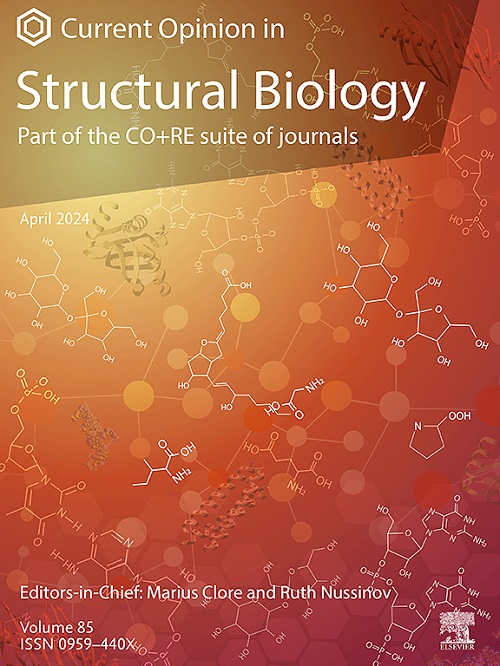Cryo-electron tomography: Challenges and computational strategies for particle picking
IF 6.1
2区 生物学
Q1 BIOCHEMISTRY & MOLECULAR BIOLOGY
引用次数: 0
Abstract
Cryo-electron tomography (cryo-ET) and subtomogram averaging have emerged as powerful techniques for investigating cellular structures and their spatial organization. However, the exact localization of proteins in the crowded and noisy environment of cellular tomograms is challenging. This review provides a comprehensive overview of existing deep learning-based particle-picking procedures, which were proposed to overcome these challenges. We evaluate both annotation-based and annotation-free methods, highlighting their respective strengths, weaknesses, and ideal use cases. Furthermore, we assess these methodologies based on various criteria, such as the effort required to generate the necessary input data, inference runtime, and filament support. Additionally, we consider practical factors such as the availability of documentation and tutorials to guide researchers in selecting the most appropriate approach for their needs.
低温电子断层扫描:粒子拾取的挑战和计算策略
低温电子断层扫描(cryo-ET)和亚层析成像平均已经成为研究细胞结构及其空间组织的有力技术。然而,在拥挤和嘈杂的细胞断层摄影环境中精确定位蛋白质是具有挑战性的。这篇综述全面概述了现有的基于深度学习的粒子拾取程序,这些程序是为了克服这些挑战而提出的。我们评估了基于注释和无注释的方法,突出了它们各自的优点、缺点和理想用例。此外,我们根据各种标准评估这些方法,例如生成必要的输入数据、推理运行时和灯丝支持所需的工作量。此外,我们考虑实际因素,如文件和教程的可用性,以指导研究人员选择最适合他们需要的方法。
本文章由计算机程序翻译,如有差异,请以英文原文为准。
求助全文
约1分钟内获得全文
求助全文
来源期刊

Current opinion in structural biology
生物-生化与分子生物学
CiteScore
12.20
自引率
2.90%
发文量
179
审稿时长
6-12 weeks
期刊介绍:
Current Opinion in Structural Biology (COSB) aims to stimulate scientifically grounded, interdisciplinary, multi-scale debate and exchange of ideas. It contains polished, concise and timely reviews and opinions, with particular emphasis on those articles published in the past two years. In addition to describing recent trends, the authors are encouraged to give their subjective opinion of the topics discussed.
In COSB, we help the reader by providing in a systematic manner:
1. The views of experts on current advances in their field in a clear and readable form.
2. Evaluations of the most interesting papers, annotated by experts, from the great wealth of original publications.
[...]
The subject of Structural Biology is divided into twelve themed sections, each of which is reviewed once a year. Each issue contains two sections, and the amount of space devoted to each section is related to its importance.
-Folding and Binding-
Nucleic acids and their protein complexes-
Macromolecular Machines-
Theory and Simulation-
Sequences and Topology-
New constructs and expression of proteins-
Membranes-
Engineering and Design-
Carbohydrate-protein interactions and glycosylation-
Biophysical and molecular biological methods-
Multi-protein assemblies in signalling-
Catalysis and Regulation
 求助内容:
求助内容: 应助结果提醒方式:
应助结果提醒方式:


